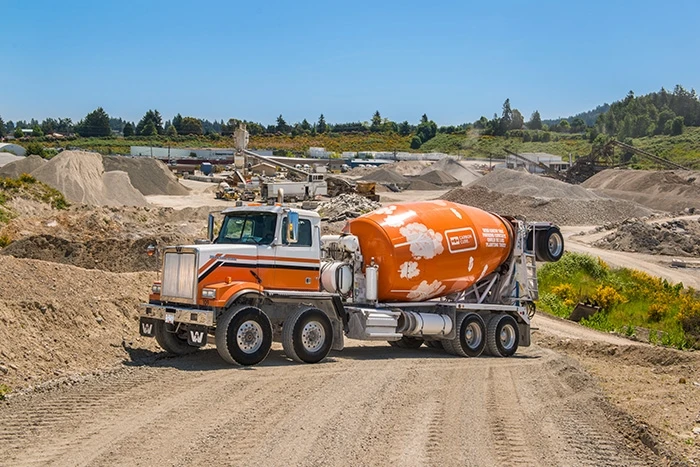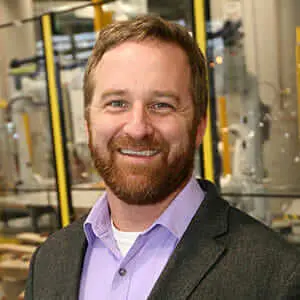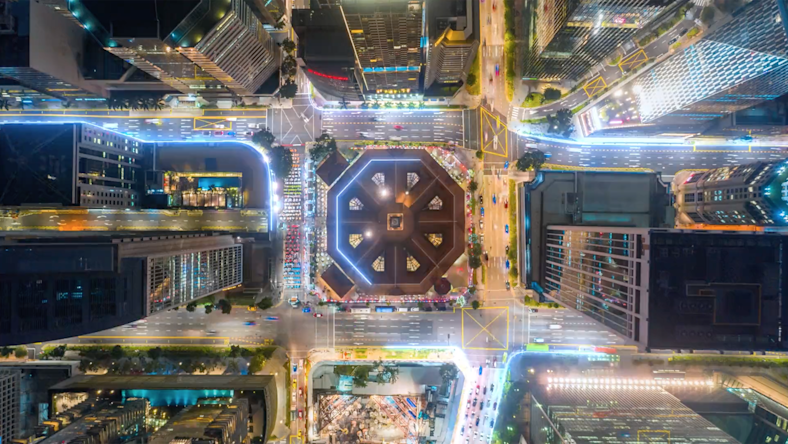& Construction

Integrated BIM tools, including Revit, AutoCAD, and Civil 3D
& Manufacturing

Professional CAD/CAM tools built on Inventor and AutoCAD
If anything could be identified as the main narrative of the previous shifting, uncertain year, it’s adaptation. Architecture, engineering, and construction (AEC) firms reacted, recalibrated, and evolved their working methods in 2021 amid rapid digitization and constant supply-chain challenges. Through it all, they figured out how to sharpen their pencils and get it done.
Yet at a time when disruptions seem to be daily events, and everything but creativity is in short supply, adaptation hasn’t been just a reaction—it has become a constant state. From adopting sustainability practices on a wider scale to making radical leaps in technological innovation, massive shifts within the AEC industries will continue in 2022 and serve as catalysts for changing models of collaboration, new technologies, and even virtual realities.
Here are six trends in architecture, construction, and beyond to look for this year.
In a more remote, work-from-home world, collaboration—the where and how of teamwork and ideation—becomes much more important. For architects and engineers, interactive design visualization will bridge the physical distance and open new opportunities. Many in the industry firmly understand that the fast-moving world of extended reality (XR) is the new environment for work.
Gaming and XR technologies (such as Iris VR) complement traditional AEC workflows, make virtual environments more immersive and cost-effective, streamline management on complex projects, and earn client buy-in for proposals. A recent example of this is from an engineering firm in Norway called Norconsult. It recently designed the Route E39 bridge using immersive virtual-reality (VR) technology from Unity to help set client expectations early in the design process and speed up decision making.
These more engaging visual platforms will help collectively design future urban environments, from single structures to entire metropolises. The American Society of Civil Engineers (ASCE) is already on the case, partnering with world building visionary Experimental Design, thought leaders, and technologists to build out an XR environment called the Future World Vision. The project showcases scenarios that imagine how cities of the future could be built, exemplifying the ways virtual worlds can better solve for today’s real-world issues.
Speaking of the metaverse, more immersive online environments, such as The Wild, have the potential to transform the way design and architecture work. Beyond the hype, design teams can experience building massing and prototyping and, in a sense, actually spend time in proposed projects, leading to a more hands-on, collaborative workflow. Testing facades for energy performance and constructability will be simpler; presentations will be more impressive; and approvals will be faster when more stakeholders can meet up on the ground floor of a design concept before actual ground is broken.
As owners face the question of how to reimagine, repurpose, or reuse their buildings and assets, data will provide the answer. With digital twins—digital representations of structures that track and analyze all manner of actual performance data—owners and designers can get incredible insights into what their next projects should look like. Prologis, which owns a massive logistics portfolio, is investing heavily in the tracking of building data, which helps everyone involved learn from the way thousands of structures operate.
The utility of this technology means more owners will either build up a bench of internal architects and engineers who have experience with digital twins or hire outside firms to provide this service. This will be one factor pulling architecture and engineering firms into more of an operational role, opening up new relationships and business opportunities with clients. Firms such as KEO and Beca are already starting to offer new digital twin services, and others will follow suit. Like so many other trends shaping the year, data collection and analysis will be a sought-after skill.
Automation will increasingly be an essential tool for designing around shortages of materials and skilled workers, helping ease design-labor challenges and supply-chain gridlock. Designing 100 buildings will result in 100 different visions, but with investment in automation, a significant portion of design work becomes semiautomatic, which is especially key when facing a shortage of engineers. Design also becomes quicker.
In the UK, the design firm Ramboll uses Autodesk Advance Steel steel-detailing software to automate the design of road gantries, cutting costs by 40% and designing in minutes what used to take hours or even days. SYSTRA, a large European infrastructure firm, uses 3D parametric modeling in Autodesk Revit to automate bridge design. These solutions will be increasingly valuable in code-based design scenarios, saving architects and engineers the time required to manually evaluate project parameters, allowing them to focus more on the creative work that sets each design apart.
When it comes to total carbon, the AEC industry has made gains in addressing operational carbon, with less attention paid to embodied carbon (the emissions created from extracting, refining, manufacturing, and moving materials). But due to successful efforts in making buildings more energy efficient, embodied carbon is becoming a bigger factor in greenhouse gas emissions. Fortunately, one of the more promising themes to emerge from the UN’s COP26 climate summit was a realization that heavy industry and embodied carbon require immediate attention and scalable solutions as part of the worldwide emissions-reduction strategy. Many building trades and material producers have answered the call with robust roadmaps, industry-wide pledges to cut emissions, and refinements of new industrial processes like green steel and carbon-capturing cement.
Change is already underway. For example, start-ups such as CarbonCure are capturing carbon and embedding it in cast concrete, and Nucor, the largest structural steel producer in the US, will start producing its new Econiq steel products in 2022—all 100% powered by green energy. Small but innovative ideas like these, along with a wider embrace by clients and the construction industry, will have a cascading effect on the rest of the world. It will be important for designers to not focus on reducing embodied carbon in a vacuum. Trade-offs among cost, carbon (operational and embodied), material waste, and even water all have to be factored into the impact on the environment. Embracing new materials and designing buildings with technological tools—such as Autodesk Forma, which helps designers plan more sustainable projects, and Innovyze, which analyzes water infrastructure—can significantly reduce the environmental footprint of future buildings.
Climate change has placed more pressure on infrastructure to perform, especially concerning the systems that run through buildings. In an era when infrastructure design needs to be rethought and building codes must evolve for rapidly shifting surroundings, architecture and construction are called to create buildings that are smarter, more efficient, and sited to avoid the ravages of tomorrow’s climate.
Consider the significant advances in consumer tech that are already on the market to monitor personal health by checking heartbeats or providing diagnoses: IoT data will play that role for buildings. How did a skyscraper perform during an earthquake, and what could be improved? How is the air quality of an apartment building? Buildings, owners, and cities are all looking for technology to monitor and evaluate performance, help predict and prevent issues, and better design the smart buildings and cities of the future.
Fully remote and hybrid working situations are not going away anytime soon, if ever. And that poses a unique challenge when it comes to keeping intellectual property (IP) and client data secure while collaborating across home and business networks. Because the risks from ransomware and hackers have increased, having a data strategy as a company is that much more important—and will require the proper investment to put the necessary tools, protections, and people in place.
IT folks who previously focused on closed systems will need to up their game to understand how to harden their networks and keep IP secure. But once they do, it will make everybody better in the future. Once everyone can work in that mode, the whole industry will be more efficient, more able to share work, and more flexible, knowing that digital data stream is secure, trusted, and protected.
Michael Gustafson served as Autodesk’s senior industry strategy manager for structural engineering, responsible for establishing long-term industry strategy for structural analysis, design, detailing, and fabrication. He has a Professional Engineer (PE) status in several states and holds BS and MS degrees from the University of Minnesota, as well as an MBA from Michael J. Coles College of Business.
Executive insights
Emerging Tech
Executive insights







